Мерцедес W06 (представяне)
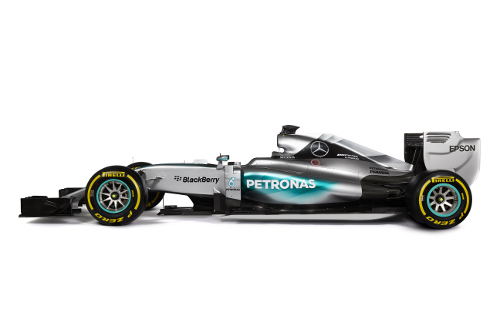
Мерцедес представиха официално W06 - болида си за сезон 2015. Ние вече знаехме как изглежда той след като по-рано през седмицата Мерцедес пуснаха видео и снимки от филмовия си ден на пистата Силвърстоун.
(авторски права на снимките - Мерцедес)
(авторски права на снимките - Мерцедес)
Chassis
Monocoque: Moulded carbon fibre and honeycomb composite structure
Bodywork: Carbon fibre composite including engine cover, sidepods, floor, nose, front wing and rear wing
Cockpit: Removable driver's seat made of anatomically formed carbon composite, Sabelt six-point driver safety harness, HANS system
Safety Structures: Cockpit survival cell incorporating impact resistant construction and penetration panels, front impact structure, prescribed side impact structures, integrated rear impact structure, front and rear roll structures
Front Suspension: Carbon fibre wishbone and pushrod activated torsion springs and rockers
Rear Suspension: Carbon fibre wishbone and pullrod activated torsion springs and rockers
Wheels: Advanti forged magnesium
Tyres: Pirelli
Brake System: Carbon / carbon discs and pads with rear brake-by-wire
Brake Calipers: Brembo
Steering: Power assisted rack and pinion
Steering Wheel: Carbon-fibre construction
Electronics: FIA standard ECU and FIA homologated electronic and electrical system
Instrumentation: McLaren Electronic Systems (MES)
Fuel System: ATL Kevlar-reinforced rubber bladder
Lubricants & Fluids: PETRONAS Tutela
Transmission
Gearbox: Eight-speed forward, one reverse unit with carbon fibre maincase
Gear Selection: Sequential, semi-automatic, hydraulic activation
Clutch: Carbon plate
Dimensions
Overall Length: 5000mm
Overall Width: 1800mm
Overall Height: 950mm
Overall Weight: 702kg
Mercedes-Benz PU106B Hybrid Technical Specification
Power Unit Specification
Type: Mercedes-Benz PU106B Hybrid
Minimum Weight: 145 kg
Power Unit Perimeter: Internal Combustion Engine (ICE)
Motor Generator Unit - Kinetic (MGU-K)
Motor Generator Unit - Heat (MGU-H)
Turbocharger (TC)
Energy Store (ES)
Control Electronics (CE)
Power Unit Allocation: Four Power Units per driver per season
Internal Combustion Engine (ICE)
Capacity: 1.6 litres
Cylinders: Six
Bank Angle: 90
No of Valves: 24
Max rpm ICE: 15,000 rpm
Max Fuel Flow Rate: 100 kg/hour (above 10,500 rpm)
Fuel Injection: High-pressure direct injection (max 500 bar, one injector/cylinder)
Pressure Charging: Single-stage compressor and exhaust turbine on a common shaft
Max rpm Exhaust Turbine: 125,000 rpm
Energy Recovery System (ERS)
Architecture: Integrated Hybrid energy recovery via electrical Motor Generator Units
Energy Store: Lithium-Ion battery solution, between 20 and 25 kg
Max energy storage/lap: 4 MJ
Max rpm MGU-K: 50,000 rpm
Max power MGU-K: 120 kW (161 hp)
Max energy recovery/lap MGU-K: 2 MJ
Max energy deployment/lap MGU-K: 4 MJ (33.3 s at full power)
Max rpm MGU-H: 125,000 rpm
Max power MGU-H: Unlimited
Max energy recovery/lap MGU-H: Unlimited
Max energy deployment/lap MGU-H: Unlimited
Fuel & Lubricants
Fuel: PETRONAS Primax
Lubricants: PETRONAS Syntium
2015 Technical Q&A with Paddy Lowe
What has been the focal point of our learning from 2014?
PL: It’s no secret that reliability let us down on a number of occasions in 2014. Thankfully, over the course of the season overall, this did not fall in an asymmetric way between the drivers – or in a costly manner to our Constructors’ Championship ambitions. But we know we need to up our game. No matter how good things might seem, there is never a scenario where you can afford to leave points on the table. Making a car reliable is a long game and a lot of effort has gone in on that side. It’s not about fixing individual issues but about raising quality across the many thousands of parts and processes involved.
Speaking of reliability, more will now be required from gearboxes in terms of durability. How tough a task is this to achieve?
PL: During the first year of the new Hybrid formula, there were two notable aspects to the rules governing the gearbox. First, there was a ‘joker’ available which permitted teams to change their ratio specification once during the year, which is now lost. This means teams have to pick their ratios for the entire season before Melbourne. Many teams took advantage of the ‘joker’ in 2014 to make performance gains rather than provide an insurance policy – running shorter gears up until Monza before changing to a longer ratio set for the remainder of the season. This won’t present an issue, however, as teams are now familiar enough with the Power Units to set ratios for the season with reasonable confidence.
The more significant change, however, is that previously teams had five opportunities per driver, per season, to change the physical components of the ratios. In effect, this meant that ratio components could be changed halfway through the six race cycle life of each gearbox. This option is now gone, which represents a far more significant change. Teams must now design ratios which will genuinely last six race distances, which has been a key obstacle to overcome through the winter.
The most obvious change, visually at least, comes in the form of the nose. What is the theory behind this change and what else will we see different on the F1 W06 Hybrid?
PL: While it has been widely quoted that regulations governing the noses of the cars have been changed with aesthetics in mind, this is actually misleading. The primary reason for the alteration has been to achieve the original height targeted by rules introduced for 2014. This was, to a greater or lesser extent, bypassed by every team last season, as the regulations were not quite tight enough. The objective behind the regulation itself is one of safety – ensuring compatibility with the range of different impacts that Formula One cars can experience. An example would be contact between the nose and a rear tyre, as we saw when Mark Webber launched into the air at Valencia a few years ago. The required nose height has been achieved by putting in place a number of additional constraints concerning the front nose sections.
A by-product has been the disappearance of some rather unfortunate looking designs as seen in 2014. Our nose was one of the shortest on the grid in 2014 and, in my opinion at least, one of the most attractive. It remains as such for 2015, albeit a little lower to comply with the new regulation. The core concept is to keep the nose as short as possible, with the mainplane of the wing as far forward of it as possible. This has produced a ‘clinging on by your fingernails’ kind of appearance where the wing attaches to the pillars, which is a big challenge to deliver structurally. Front wing stiffness tests today really do push the limits of engineering – particularly when coupled with the requirements of the front impact test.
The other more obvious visual differences concern the rear wing – which will move to a central, single pylon configuration for structural and aerodynamic reasons – and the external front suspension, which is an even more extreme version of the innovative concept we introduced last year.
And under the covers?
PL: One of the big challenges of 2014 with the new Power Units was cooling – particularly the charge air cooling, which was a significant new element. Now in its second year of evolution, we have been able to go through the analysis loop to find performance through a better optimised solution – the objective being to find the best net performance at the full range of temperatures experienced through a season.
Another technical talking point of last year was the ban on FRIC, which came around quite quickly and unexpectedly. The suspension concept in the W05 was built around the presence of the FRIC system. The W06 suspension system has been designed without FRIC from the outset, which has presented opportunities to re-optimise in this area.
For all teams – and more notably drivers – weight was a key consideration in 2014. How will this alter for 2015?
PL: When the rules were put together for the new generation of Power Units, it was quite tricky to estimate what weight would be required to incorporate the new systems into a car. The number that was picked was quite aggressive – something which became apparent as the season drew closer. Some teams were content with the previous limit, while others were finding it very challenging. A 10kg increase was agreed only by majority vote, which is why there has been a notice period for the rule to be introduced for 2015. In addition the 2015 tyres are around a kilo heavier than last year due to improvements to the rear construction, so the final weight limit is 702kg – an increase overall of 11kg.
As always, it’s a matter of choosing how best to use the extra weight for the most performance – not necessarily a chance for the drivers to start eating cakes! Saving weight has always been central to the sport – creating efficient structures that are lighter but also stronger and more aerodynamically beneficial. We have put a lot of work into finding those few percentage points on every single component.
On the topic of safety, further changes have now been introduced to provide improved driver protection – talk us through these?
PL: Firstly, the Zylon anti-intrusion panels on both sides of the survival cell have been extended upwards to the rim of the cockpit and alongside the driver’s head. This was an area which was identified as having the potential to be stronger than it has been in the past and these changes will address that. In certain incidents, it will certainly be beneficial to the safety of the driver.
Furthermore, in an additional bid to improve safety, a Virtual Safety Car (VSC) system has been implemented to ensure drivers slow sufficiently under certain conditions. This was successfully trialled during practice sessions towards the end of last season and has now been introduced fully for 2015. It can be used to neutralise a race without having to introduce the safety car itself by enforcing a speed profile to which the drivers must adhere. This addresses one of the pitfalls of waved yellow flags. While drivers are expected to slow significantly in such circumstances – and the stewards will look for throttle lifts accordingly – what constitutes a ‘lift’ can be subjective. These can be very minor and yield little speed reduction. Of course, racers being racers, they will always be inclined to push the boundaries. So, the VSC is a mechanism to manage those mid-range incidents where it will be much safer to force the drivers to stay well within the limits of the vehicle.
2015 Technical Q&A with Andy Cowell
As we approach the second season of the Hybrid Formula One era, just how impressive was the inaugural year for this revolutionary formula?
AC: Every manufacturer throughout the grid did a fantastic job in 2014 in terms of achieving high thermal efficiency and therefore performance from the fixed fuel flow rate. The numbers speak for themselves. A reduction from 150kg to 100kg of race fuel; downsizing from a 2.4 litre V8 to a 1.6 litre V6 ICE; creating a package that was over 30% more efficient than its predecessor – all within a set of regulations that pushed reliability to the very limit. Race retirements directly related to any element of the Power Unit averaged less than one per driver over the course of the season. Lap times in the final few races were frequently under a second shy of their 2013 counterparts in race trim and less than half a second off in qualifying trim. This was a phenomenal achievement for everyone involved. Everybody has the opportunity to change a significant portion of the Power Unit for 2015 to further improve efficiency and, once again, performance…
How does 2015 differ from 2014 in terms of the challenges faced?
AC: It’s very much a case of evolution rather than revolution in 2015. Where last year was a case of “Can we do it?” we are now faced with a different challenge – “How do we improve it?” We have been working hard on all areas of the Power Unit to increase the conversion efficiency of every single system – trying to make our package more thermally efficient and produce greater absolute power. The focus in this respect has been on combustion efficiency and frictional losses – be they in core parts of the ICE or the ancillary aspects of both ICE and ERS. Development of fuel and lubricants has been critical to this process and we have continued working well with PETRONAS in this respect. There is very significant scope for change under the regulations and significant opportunities to make performance gains, so we have left no stone unturned in our quest for performance – and I am sure that exactly the same is true of our competitors.
What are the main regulatory changes for 2015?
AC: From a Power Unit perspective, there have effectively been two major regulation changes introduced for the 2015 season. Firstly, a maximum of four Power Units are now permitted per driver, per season – a reduction from the five available in 2014. Coupled with an increase in the length of the calendar from 19 to 20 races this presents a significant challenge, with each Power Unit now required to last over 25% longer than before.
Secondly, variable inlet systems are now permitted. The last generation of Formula One engines that were permitted to use such technology were those of the V10 era. This provides an opportunity to optimise the inlet tuning of the ICE against all operating RPM values, thus improving efficiency.
Finally, there has been a clarification of the rules governing engine modifications. Manufacturers now have the opportunity to introduce upgrades to their engines throughout the season – provided they remain within the overall limit of 32 development ‘tokens’ and do not exceed the maximum of four engines per driver, per season. This story has been much debated in the media but, from a regulatory point of view, it presents an equal opportunity for each manufacturer to improve their engine as the year progresses.
This decision hasn’t altered our development strategy for 2015, which was always to gather the necessary data from pre-season testing in order to define and submit the engine specification for the opening race. However, it does offer the opportunity to exploit this interpretation for further gain later in the season, should we choose to do so.
There have been wider changes too in terms of fresh faces and new partnerships…
AC: Indeed. Firstly, we’re all pleased and excited to have another Power Unit manufacturer, Honda, joining Formula One. This is good news for the sport, for the competition, for the fans and for the automotive industry as a whole. We therefore offer them a warm welcome and wish them well. Also, we are very much enjoying working with our new partners at Lotus. We have a great admiration not only for the achievements of the team at Enstone over the years but also for their professional approach to creating racing cars. They are a strong addition to our roster of partner teams and we look forward to working together in the seasons ahead.
What has been the focal point of our learning from 2014?
PL: It’s no secret that reliability let us down on a number of occasions in 2014. Thankfully, over the course of the season overall, this did not fall in an asymmetric way between the drivers – or in a costly manner to our Constructors’ Championship ambitions. But we know we need to up our game. No matter how good things might seem, there is never a scenario where you can afford to leave points on the table. Making a car reliable is a long game and a lot of effort has gone in on that side. It’s not about fixing individual issues but about raising quality across the many thousands of parts and processes involved.
Speaking of reliability, more will now be required from gearboxes in terms of durability. How tough a task is this to achieve?
PL: During the first year of the new Hybrid formula, there were two notable aspects to the rules governing the gearbox. First, there was a ‘joker’ available which permitted teams to change their ratio specification once during the year, which is now lost. This means teams have to pick their ratios for the entire season before Melbourne. Many teams took advantage of the ‘joker’ in 2014 to make performance gains rather than provide an insurance policy – running shorter gears up until Monza before changing to a longer ratio set for the remainder of the season. This won’t present an issue, however, as teams are now familiar enough with the Power Units to set ratios for the season with reasonable confidence.
The more significant change, however, is that previously teams had five opportunities per driver, per season, to change the physical components of the ratios. In effect, this meant that ratio components could be changed halfway through the six race cycle life of each gearbox. This option is now gone, which represents a far more significant change. Teams must now design ratios which will genuinely last six race distances, which has been a key obstacle to overcome through the winter.
The most obvious change, visually at least, comes in the form of the nose. What is the theory behind this change and what else will we see different on the F1 W06 Hybrid?
PL: While it has been widely quoted that regulations governing the noses of the cars have been changed with aesthetics in mind, this is actually misleading. The primary reason for the alteration has been to achieve the original height targeted by rules introduced for 2014. This was, to a greater or lesser extent, bypassed by every team last season, as the regulations were not quite tight enough. The objective behind the regulation itself is one of safety – ensuring compatibility with the range of different impacts that Formula One cars can experience. An example would be contact between the nose and a rear tyre, as we saw when Mark Webber launched into the air at Valencia a few years ago. The required nose height has been achieved by putting in place a number of additional constraints concerning the front nose sections.
A by-product has been the disappearance of some rather unfortunate looking designs as seen in 2014. Our nose was one of the shortest on the grid in 2014 and, in my opinion at least, one of the most attractive. It remains as such for 2015, albeit a little lower to comply with the new regulation. The core concept is to keep the nose as short as possible, with the mainplane of the wing as far forward of it as possible. This has produced a ‘clinging on by your fingernails’ kind of appearance where the wing attaches to the pillars, which is a big challenge to deliver structurally. Front wing stiffness tests today really do push the limits of engineering – particularly when coupled with the requirements of the front impact test.
The other more obvious visual differences concern the rear wing – which will move to a central, single pylon configuration for structural and aerodynamic reasons – and the external front suspension, which is an even more extreme version of the innovative concept we introduced last year.
And under the covers?
PL: One of the big challenges of 2014 with the new Power Units was cooling – particularly the charge air cooling, which was a significant new element. Now in its second year of evolution, we have been able to go through the analysis loop to find performance through a better optimised solution – the objective being to find the best net performance at the full range of temperatures experienced through a season.
Another technical talking point of last year was the ban on FRIC, which came around quite quickly and unexpectedly. The suspension concept in the W05 was built around the presence of the FRIC system. The W06 suspension system has been designed without FRIC from the outset, which has presented opportunities to re-optimise in this area.
For all teams – and more notably drivers – weight was a key consideration in 2014. How will this alter for 2015?
PL: When the rules were put together for the new generation of Power Units, it was quite tricky to estimate what weight would be required to incorporate the new systems into a car. The number that was picked was quite aggressive – something which became apparent as the season drew closer. Some teams were content with the previous limit, while others were finding it very challenging. A 10kg increase was agreed only by majority vote, which is why there has been a notice period for the rule to be introduced for 2015. In addition the 2015 tyres are around a kilo heavier than last year due to improvements to the rear construction, so the final weight limit is 702kg – an increase overall of 11kg.
As always, it’s a matter of choosing how best to use the extra weight for the most performance – not necessarily a chance for the drivers to start eating cakes! Saving weight has always been central to the sport – creating efficient structures that are lighter but also stronger and more aerodynamically beneficial. We have put a lot of work into finding those few percentage points on every single component.
On the topic of safety, further changes have now been introduced to provide improved driver protection – talk us through these?
PL: Firstly, the Zylon anti-intrusion panels on both sides of the survival cell have been extended upwards to the rim of the cockpit and alongside the driver’s head. This was an area which was identified as having the potential to be stronger than it has been in the past and these changes will address that. In certain incidents, it will certainly be beneficial to the safety of the driver.
Furthermore, in an additional bid to improve safety, a Virtual Safety Car (VSC) system has been implemented to ensure drivers slow sufficiently under certain conditions. This was successfully trialled during practice sessions towards the end of last season and has now been introduced fully for 2015. It can be used to neutralise a race without having to introduce the safety car itself by enforcing a speed profile to which the drivers must adhere. This addresses one of the pitfalls of waved yellow flags. While drivers are expected to slow significantly in such circumstances – and the stewards will look for throttle lifts accordingly – what constitutes a ‘lift’ can be subjective. These can be very minor and yield little speed reduction. Of course, racers being racers, they will always be inclined to push the boundaries. So, the VSC is a mechanism to manage those mid-range incidents where it will be much safer to force the drivers to stay well within the limits of the vehicle.
2015 Technical Q&A with Andy Cowell
As we approach the second season of the Hybrid Formula One era, just how impressive was the inaugural year for this revolutionary formula?
AC: Every manufacturer throughout the grid did a fantastic job in 2014 in terms of achieving high thermal efficiency and therefore performance from the fixed fuel flow rate. The numbers speak for themselves. A reduction from 150kg to 100kg of race fuel; downsizing from a 2.4 litre V8 to a 1.6 litre V6 ICE; creating a package that was over 30% more efficient than its predecessor – all within a set of regulations that pushed reliability to the very limit. Race retirements directly related to any element of the Power Unit averaged less than one per driver over the course of the season. Lap times in the final few races were frequently under a second shy of their 2013 counterparts in race trim and less than half a second off in qualifying trim. This was a phenomenal achievement for everyone involved. Everybody has the opportunity to change a significant portion of the Power Unit for 2015 to further improve efficiency and, once again, performance…
How does 2015 differ from 2014 in terms of the challenges faced?
AC: It’s very much a case of evolution rather than revolution in 2015. Where last year was a case of “Can we do it?” we are now faced with a different challenge – “How do we improve it?” We have been working hard on all areas of the Power Unit to increase the conversion efficiency of every single system – trying to make our package more thermally efficient and produce greater absolute power. The focus in this respect has been on combustion efficiency and frictional losses – be they in core parts of the ICE or the ancillary aspects of both ICE and ERS. Development of fuel and lubricants has been critical to this process and we have continued working well with PETRONAS in this respect. There is very significant scope for change under the regulations and significant opportunities to make performance gains, so we have left no stone unturned in our quest for performance – and I am sure that exactly the same is true of our competitors.
What are the main regulatory changes for 2015?
AC: From a Power Unit perspective, there have effectively been two major regulation changes introduced for the 2015 season. Firstly, a maximum of four Power Units are now permitted per driver, per season – a reduction from the five available in 2014. Coupled with an increase in the length of the calendar from 19 to 20 races this presents a significant challenge, with each Power Unit now required to last over 25% longer than before.
Secondly, variable inlet systems are now permitted. The last generation of Formula One engines that were permitted to use such technology were those of the V10 era. This provides an opportunity to optimise the inlet tuning of the ICE against all operating RPM values, thus improving efficiency.
Finally, there has been a clarification of the rules governing engine modifications. Manufacturers now have the opportunity to introduce upgrades to their engines throughout the season – provided they remain within the overall limit of 32 development ‘tokens’ and do not exceed the maximum of four engines per driver, per season. This story has been much debated in the media but, from a regulatory point of view, it presents an equal opportunity for each manufacturer to improve their engine as the year progresses.
This decision hasn’t altered our development strategy for 2015, which was always to gather the necessary data from pre-season testing in order to define and submit the engine specification for the opening race. However, it does offer the opportunity to exploit this interpretation for further gain later in the season, should we choose to do so.
There have been wider changes too in terms of fresh faces and new partnerships…
AC: Indeed. Firstly, we’re all pleased and excited to have another Power Unit manufacturer, Honda, joining Formula One. This is good news for the sport, for the competition, for the fans and for the automotive industry as a whole. We therefore offer them a warm welcome and wish them well. Also, we are very much enjoying working with our new partners at Lotus. We have a great admiration not only for the achievements of the team at Enstone over the years but also for their professional approach to creating racing cars. They are a strong addition to our roster of partner teams and we look forward to working together in the seasons ahead.
Още от сезон 2015:
- Тестове в Абу Даби 01.12.2015 (снимки)
- Рено ще имат собствен отбор във Формула 1 догодина
- Абу Даби 2015 - резултати от прогнозите (игра)
- Абу Даби 2015 - неделя (снимки)
- Абу Даби 2015 - коментарът по българските телевизии
- Абу Даби 2015 - разлики по обиколки (графика)
- Абу Даби 2015 - обиколки (графика)
- Абу Даби 2015 - позиции (графика)
- Абу Даби 2015 - разлика до първия (графика)
- Абу Даби 2015 - гумите в състезанието
Поне така на първо четене не виждам осезаема разлика с миналогодишната кола, освен в носа!
@Becko: Да не би в някой друг отбор да виждаш осезаема разлика с миналогодишната кола ?! Особено пък тези, които бяха в челото ... Съвсем нормално е това да е еволюция, а не революция на перфектният шампионски болид от миналата година.
Все пак има множество промени. Предното крило има доста нови елементи. Turning vane-овете също са променени доста. Добавили са чисто нов и доста агресивен batwing. Камерите са позиционирани по много интересен нов начин за носа. Махнати са предните brake duct-ове и под тях са добавени много интересни шиповидни елементи. Дизайна на рамената на окачванто са промемени. Кормилната щанга е смъкната в долната секция на окачавнето. Сайдподите също са леко променени и има много интересно ново крилце над тях. Roll hoop-a е тотално промемен. Вече няма 2 въздухозаборника,а само 1, който е разделен на 2 части. Monkey seat-a също е с нов дизайн, както и доста елементи в задната част.
Това виждам на пръв поглед. Сигурно има и доста други промени, които ще бъдат инсталирани преди първото състезание в Австралия.
Най-важната промяна за мен все пак е мъничкият нос, който са успели да направят от Мерцедес. Направо се чудя как са успели да преминат краш тестовете с толкова тънък и къс нос ... Сигурен съм, че всички други отбори биха искали да имат подобен нос, но явно до сега не са успели да преминат краш тестовете.
Все пак има множество промени. Предното крило има доста нови елементи. Turning vane-овете също са променени доста. Добавили са чисто нов и доста агресивен batwing. Камерите са позиционирани по много интересен нов начин за носа. Махнати са предните brake duct-ове и под тях са добавени много интересни шиповидни елементи. Дизайна на рамената на окачванто са промемени. Кормилната щанга е смъкната в долната секция на окачавнето. Сайдподите също са леко променени и има много интересно ново крилце над тях. Roll hoop-a е тотално промемен. Вече няма 2 въздухозаборника,а само 1, който е разделен на 2 части. Monkey seat-a също е с нов дизайн, както и доста елементи в задната част.
Това виждам на пръв поглед. Сигурно има и доста други промени, които ще бъдат инсталирани преди първото състезание в Австралия.
Най-важната промяна за мен все пак е мъничкият нос, който са успели да направят от Мерцедес. Направо се чудя как са успели да преминат краш тестовете с толкова тънък и къс нос ... Сигурен съм, че всички други отбори биха искали да имат подобен нос, но явно до сега не са успели да преминат краш тестовете.
Нов коментар
Само регистрирани потребители могат да коментират. Ако вече имате регистрация можете да влезете в сайта от "Вход". В противен случай можете да се регистирате като натиснете "Вход" и избере "Регистрация". За повече информация: f1.f-e-n.net/index.php/url14729


















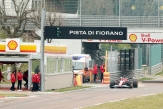
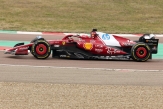
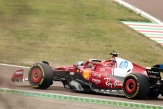

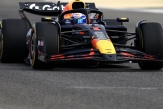
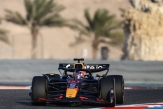
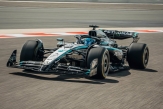




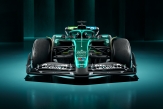
.jpg)
.jpg)
.jpg)
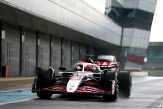
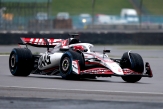
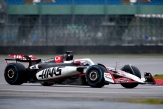
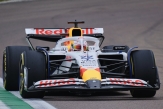
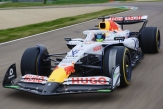
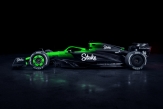
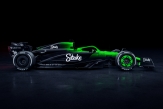

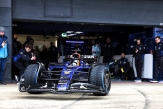
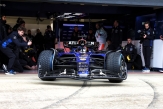

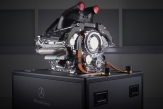
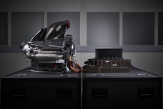
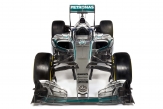
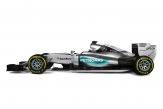
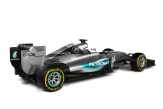
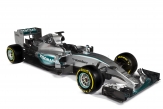
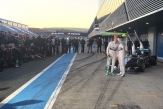
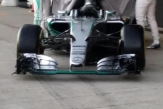
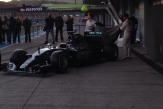

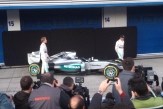
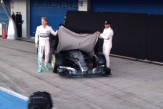

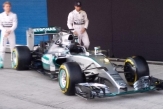
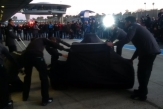
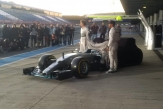
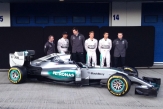
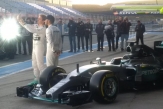


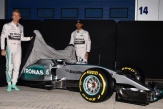
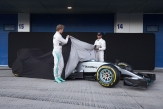
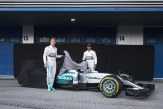






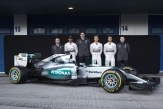
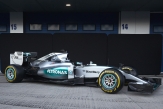


Коментари